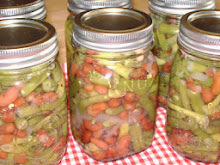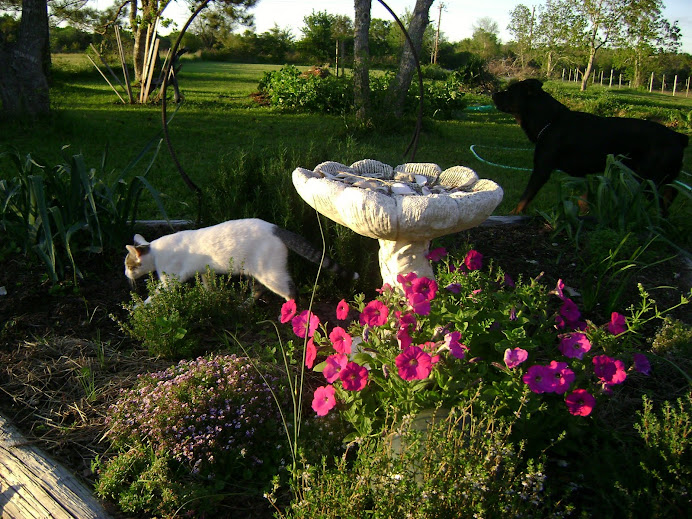Triticale (Wheat/Rye) at Thyme Square Gardens
No one says permaculture like Masanobu Fukuoka residing on the Island of Shikoku, in southern Japan. It is quite strange how Mr. Garden and myself happened upon many of his practices all on our own long before we knew of this amazing farmer.
I know it all began when we stopped using chemicals here long ago. We found the urgency for bringing a natural balance into our gardens. One that utilized every ounce that nature had to offer. The day when Mr. Garden decided to cast off the tiller to utilize the no-tillage technique was a huge step for us.
We seen right off the need for creating and using a forest floor plan. One in which I've written about called Beginning Steps into Forest Gardening. After all the whole concept is one to recreate and mimic nature. What more balanced bounty could possibly be found in a natural forest that has been unhampered by man.
I think the hardest part for us in the beginning was living somewhat on the prairie where things such as trees and leaves could have provided a whole host of organic matter, but which we were in short supply. One can never have enough organic matter. NEVER!! Not when farming and gardening! For it is the organic matter that allows us to create the most fertile and living soil for growing our chemical free world of vegetables and fruits.
Small 12X25 plot of Triticale Late Fall of 2012
To sum it all up quite simply, grain crops hold immense sustainability to your homesteading efforts. I found this out after several years of strawberry growing here in the deep south. One must do some serious mulching in Texas, this is a fact!
Point one, one cannot obtain healthy organic hay or straw easily in these parts, if at all. It has actually become a valuable commodity for organic growers.
Point two, I don't like hay for my strawberries. It disintegrates to rapidly for one thing. This is why they are called STRAW berries and not HAY berries. I think I'm learning to pay a little more attention to these minor details. .I must have my strawberries, so I must have my straw!
Point three, Non the less, straw is an excellent source of mulch. One in which you can easily grow yourself, thus said "permaculture." It acts as an excellent source for choking out unwanted weeds. By laying it down in your crop and path areas you will be enriching your soil too.
Point four, straw is also an excellent source of bedding material for your chickens as well as the seeds being a supplement to their diets.
Point five, The triticale we grow is non hybrid. It is a natural cross and open pollinated. Therefor we save the seeds and replant when necessary without repurchasing the seeds.
These days it seems the strangest things have become valuable resources that were once taken for granted. Organic and chemical free is not so available these days on your local level. It's time for all of us gardeners to incorporate some very important things within our fields in which to create a sustainable environment for our future generations.
Happy Gardening!
Pammy





















.jpg)



















No comments:
Post a Comment